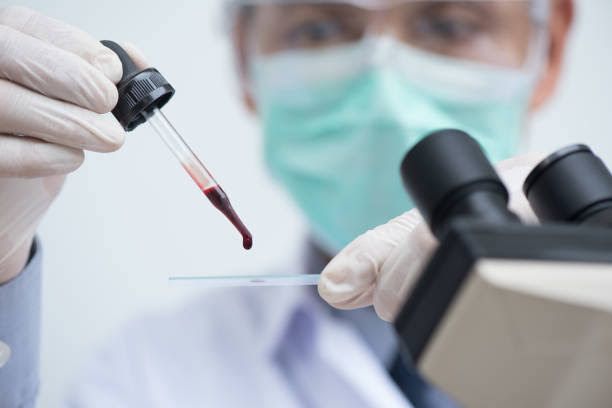
The detection of the Plasmodium pathogen, which causes malaria, is primarily performed through microscopic examination of peripheral blood smears. This method remains the gold standard for diagnosing malaria due to its ability to identify the presence of parasites and differentiate between species. The procedure involves preparing thick and thin blood smears, staining them, and examining them under a microscope.
Step 1: Sample Collection
- Blood Sample Collection: A blood sample is typically collected via a finger prick or venipuncture. For thick and thin smears, it is essential to use EDTA (ethylenediaminetetraacetic acid) as an anticoagulant to prevent clotting.
- Preparation of Smears: Two types of smears are prepared from the blood sample:
- Thick Smear: A larger drop of blood is placed on a slide and spread into a thick layer. This smear allows for the concentration of parasites in a smaller volume of blood.
- Thin Smear: A small drop of blood is spread out evenly across the slide to create a thin layer. This preparation facilitates better visualization of individual parasites.
Step 2: Staining
- Staining Procedure: Both types of smears are stained using Giemsa stain or Wright-Giemsa stain, which highlights the cellular components and makes the parasites visible.
- Thick Smear Staining: The thick smear is stained without prior fixation; this allows for better visibility of parasites since red blood cells (RBCs) are lysed during staining.
- Thin Smear Staining: The thin smear can be fixed with methanol before staining to preserve cell morphology.
Step 3: Microscopic Examination
- Initial Screening:
- The thick smear should be examined first at low magnification (10× or 20×) to quickly scan for large parasites or abnormalities.
- After initial screening, switch to high magnification (100× oil immersion objective) for detailed examination.
- Identifying Parasites:
- In the thick smear, look for malaria parasites among white blood cells (WBCs). If parasites are detected, note their morphology.
- For species identification, examine the thin smear under high magnification where individual parasite stages can be distinguished more clearly.
- Quantifying Parasites:
- To quantify parasitemia (the percentage of infected RBCs), count the number of parasitized RBCs against a total number (usually 500-2000 RBCs). The formula used is: Percentage parasitemia = (Number of parasitized RBCs ÷ Total RBCs) × 100
Step 4: Interpretation of Results
- Determining Infection Status:
- A positive result indicates malaria infection if any Plasmodium species are identified in sufficient numbers.
- A negative result does not completely rule out malaria; further testing may be required if clinical suspicion remains high.
- Species Identification:
- Species identification can be made based on morphological characteristics observed in the thin smear, such as size, shape, and developmental stage (trophozoite, schizont, gametocyte).
Conclusion
The peripheral smear technique for detecting Plasmodium pathogens is a critical diagnostic tool in malaria management. It requires careful preparation and examination but provides valuable information regarding both infection status and species identification that guides treatment decisions.







